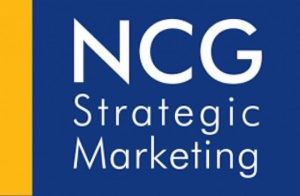I was at a networking event recently where the organizers drew a business card from a fishbowl to select one lucky attendee. They then provided that individual with a full two minutes to sell the crowd on their company, their services or themselves.
It turned out that the individual whose name was drawn was unemployed. What an opportunity, right? Here was the chance to sell himself before a room full of well-educated, well-connected people from a diversity of professions and industries. But how did this individual use this opportunity?
Well, basically, he squandered it. He talked about what he did at his old job in mind-numbing detail, and then he talked some more about what he did at his old job, and then he finished up by – you guessed it – talking about what he did at his old job.
Yikes.
And the worst thing was that he did such a deep dive into what he did at his old job – without ever explaining what he did at a sufficiently high level for this intelligent, but diverse audience from many different fields – that many of us were left speechless.
You see, ironically enough, when this guy had finished talking for two minutes about what he did at his old job, none of us could even tell you what he had done at his old job. Nor could we tell you what he wanted to do in his next job, or what he felt he was unusually qualified to do, or what he was passionate about or with what particular companies or organizations he was hoping to do this activity at some point in the future.
Okay, all that is not entirely true; I did glean some idea of what he does. As my mother says about any guy who labors in the technology sector, “He works with computers.”
So, this computer guy lost at least 99% of the audience. And because he never bothered to provide a high-level view of what he did, he never gave the audience a trail map or even any breadcrumbs to find their way back to him. Therefore, even though the audience was predisposed to like this guy and want to help him, he gave them absolutely nothing to work with. And the point is, each of those people in the audience knows somebody – or even a few somebodies. And if he’d thrown the crowd a few crumbs, it could have come back to him in a big way.
Perhaps we should give this individual a break because he certainly didn’t know that he was going to have this great opportunity to speak, and maybe he was nervous, and maybe he hadn’t been out of a job long enough to hone his elevator pitch. The point here is that all of us should make sure that we learn something from the mistakes he made.
Because here’s the rub: Lawyers aren’t all that different from techies or any other group of professionals. We all love to talk about ourselves, and we all love to impress others with how much we know. But sometimes – in fact, often – that can be a bad thing.
That’s why you need a really strong 30-second elevator pitch that describes what you do in an understandable, compelling and memorable way. But don’t just work on one elevator pitch, because you may need at least two of them: one for a general audience and the other for that much smaller group of your peers that will understand and appreciate all the loving details of what you do. And that’s the key: You must know your audience and speak accordingly, or you will have lost your audience and lost your opportunity.
Finally, it’s useful to have a very short, five-second version of your pitch. That’s what I call a Fast Pitch, for when people just want to know what you do, and when 30 seconds would feel like half an hour. But don’t be deceived; what you say and how you say it in those five seconds can mean the difference between a conversation that lasts a minute and one that ends up with a meeting.
Whether you know it or not, you’re selling yourself all the time. It doesn’t just take place when you’re making a formal presentation to a big client; it can take place when you’re ordering a beer from the bar and when you hold the door open for a stranger. And of course, it takes place when you’ve just met someone and you’re talking about what you do. Each of these can be a great opportunity, and they can arise many times a day when you’re not even thinking about networking. That’s why you’ve got to have at least a couple well-crafted elevator pitches at the ready, pitches that you make sure are personal, compelling and meaningful to your audience.
“So, what do you do?”
Carpe diem.


